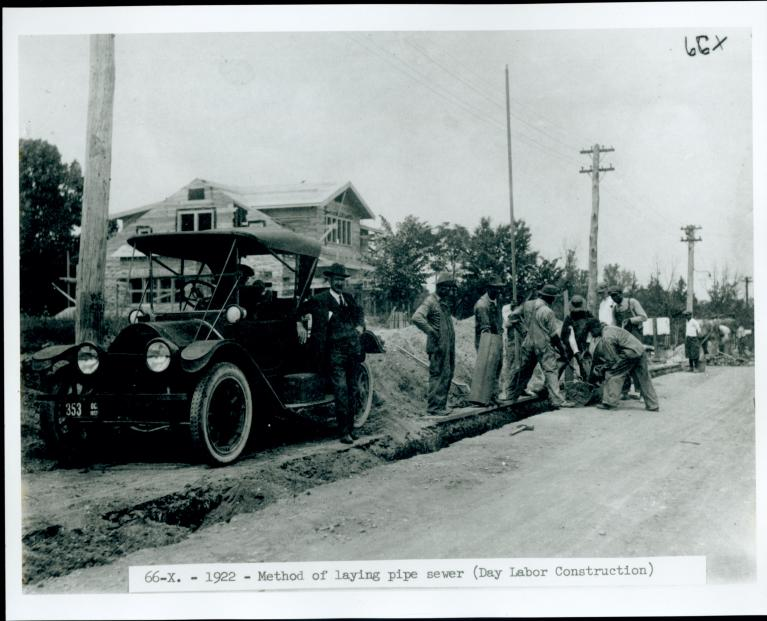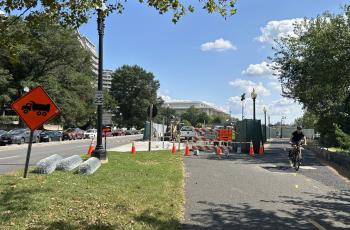
The District's sewerage system, one of the oldest in the United States, began around 1810 when sewers and culverts were constructed to safely drain storm and ground water from the streets. These drains were not all built at the same time and were not linked together to form a "system" as we know it today.
By 1850, most of the streets along Pennsylvania Avenue, from First to 15th Street, had spring or well water piped in, thus creating the need for the first sanitary sewage process. At this time, sewage was discharged into the nearest body of water.
In 1859, the Washington Aqueduct was supplying river water to the District. This, together with the surge in population during the civil war, quickly created a marked increase in water pollution in the nation's capital.
Before the end of the war, there were epidemics of smallpox, typhoid and malaria, which took many thousands of lives. These epidemics prompted the Federal Government to investigate the problem of sanitary sewage.
From 1871-1874, a general construction program was undertaken by the Board of Public Works, building approximately 80 miles of sewers. Although the amount of construction was impressive, much of the work was poorly planned, structurally unsound and hydraulically inadequate.
As a result of the program and up until 1880, the foul conditions in the Washington canal and along B Street (now Constitution Avenue) were eliminated by the construction of the B Street and Tiber Creek Sewers and filling in the canal. This also transferred the problem to the marshes along the Potomac and Anacostia Rivers.
Up to the 1880s, the sewerage system that served the District was a combined system that carried and discharged both sanitary sewage and stormwater into localways. In the 1890's, there was considerable difference of opinion among engineers as to the desirability of retaining such a system.
A Board of Engineers appointed by President Benjamin Harrison recommended that the combined system be retained, but in addition, extensions be built to serve new areas as a system using separate lines to carry stormwater and sanitary flows.
The Board also recommended that all the sewage flows be discharged at a point far enough down the Potomac River to prevent their return to the environs of the city. This discharge point is still located at Blue Plains, the southernmost tip of the District.
Upon further recommendation from the Board, construction of a system of large interceptor sewers was undertaken to collect and carry sanitary sewage and some stormwater to a pumping station on the bank of the Anacostia River and to the discharge point at Blue Plains. The implementation of those recommendations accounts for the major portion of the current sewage system.


